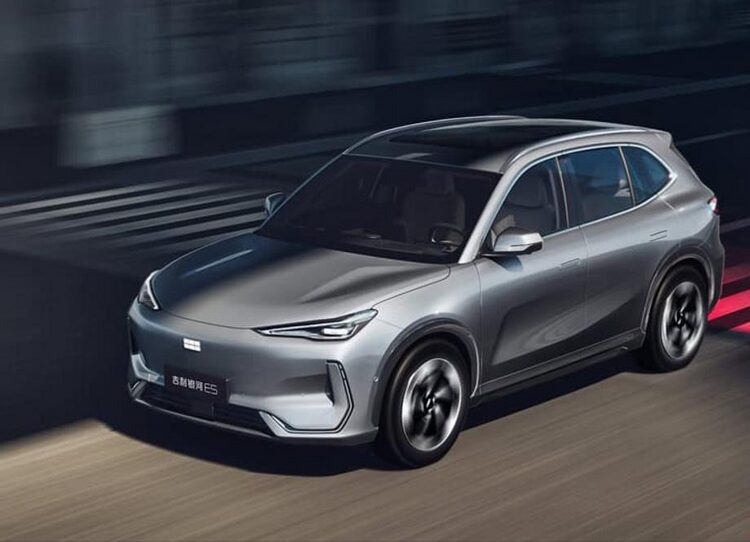Do You Know Why Your Volvo Is Still Swedish? – Geely’s Ingenious ‘Invisible Hand’ Strategy
Blog Post 4 of 5
“If you told a Volvo owner they’re driving a Chinese car, most would probably raise an eyebrow.”
And they wouldn’t be entirely wrong. The majority of Volvo’s core models (like the XC60 and XC90) are still produced in Sweden and Belgium. Polestar’s R&D headquarters remains firmly in Sweden. And yet, the owner of these iconic brands is China’s Geely Group. This seemingly contradictory situation is the very heart of Geely’s brilliant and formidable strategy to dismantle the global skepticism towards “Made in China.”
Geely didn’t burst onto the scene with the flashy fanfare of Xiaomi. Instead, over the last decade, it has quietly acquired historic European auto brands, seeping into the deepest layers of the market. Their strategy isn’t “domination” but to act as an ‘invisible hand’, guiding consumers to willingly open the gates of their own skepticism.

Strategy 1: How to Buy Trust – Volvo as the Trojan Horse
The highest mountain for any new brand to climb is the mountain of “trust.” “Can I rely on this car? Will it break down? Is the after-sales service dependable?” To answer these questions can take decades and immense investment. Geely solved this problem in the simplest way possible: they acquired trust itself.
The Proxy for Quality and Safety: “I don’t know much about Geely, but if they’re the company that makes Volvos, they must be doing something right.” This train of thought is precisely the ‘Trust Transfer’ that Geely engineered. After acquiring Volvo, Geely deliberately kept its production bases and R&D core in Europe. This created a perfect shield, blocking the brand value erosion and consumer resistance that would have occurred with a “Made in China” label. As a result, Volvo is still perceived as “Scandinavian Premium,” and its halo effect becomes an asset for the entire Geely Group.
Completing the Tech Portfolio: By acquiring Volvo (Safety/Premium), Lotus (Performance/Heritage), and Polestar (Design/EV Tech), Geely assembled a dream portfolio. This goes beyond just owning multiple brands; it signifies the internalization of the core values that define a great automobile: safety, performance, and design.
Strategy 2: How to Borrow an Identity – The Case of Lynk & Co and Geely
This acquired trust and technology now serve as the fertile ground to cultivate Geely’s own brands.
‘Volvo’s Tech, Different Price’ – Lynk & Co: Targeting a younger demographic in Europe, Lynk & Co doesn’t hide the fact that its cars are built on the same CMA platform as Volvo. This delivers a highly persuasive message: “Experience Volvo-level safety and technology at a more reasonable price with an innovative subscription model.” Consumers see Lynk & Co not as a “Chinese brand,” but as a ‘smart alternative that shares Volvo’s technology.’
‘Lotus’s Soul, Different Sensation’ – Geely’s Own Models: When Geely launches its own branded cars in Europe, the line “Chassis tuning by Lotus Engineering” is a deliberate strategic move. It directly counters the prejudice of “Chinese cars have sloppy handling” by borrowing the legendary name of Lotus, an F1 icon.
Real-World Limits: How Long Can the ‘Invisible Hand’ Remain Invisible?
Even this clever strategy has clear limitations.
- The Weakness of the Geely Brand Itself: Despite the success of Volvo and Polestar, the “Geely” brand itself still has a minimal presence in the premium market. This shows the limits of relying on “borrowed prestige” to build independent brand power.
- Political Risk: As geopolitical tensions rise, the fact that key European brands are owned by Chinese capital could become a significant political risk. The ‘invisible hand’ could, at any moment, become a ‘visible chain.’
- The Profitability Dilemma: It remains to be seen how much the brands, acquired with massive capital, will contribute to the group’s overall profitability. They face the immense task of proving their synergy, especially in the great transition to electric vehicles.
Conclusion: What is the Clever Predator’s Next Target?
Geely’s strategy isn’t about selling “Chinese cars.” It’s about selling “European sensibility and technology” and absorbing the profits. Instead of a head-on assault against the resistance to “Made in China,” they have skillfully bypassed it to enter the very core of the market.
The moment you close Volvo’s heavy door and admire its safety, Geely might be smiling. Because you have just willingly walked into the system of trust they so carefully designed. Now, the entire market is watching to see what ‘next target’ they will aim for with their completed technology portfolio.
My AI Jazz Project: